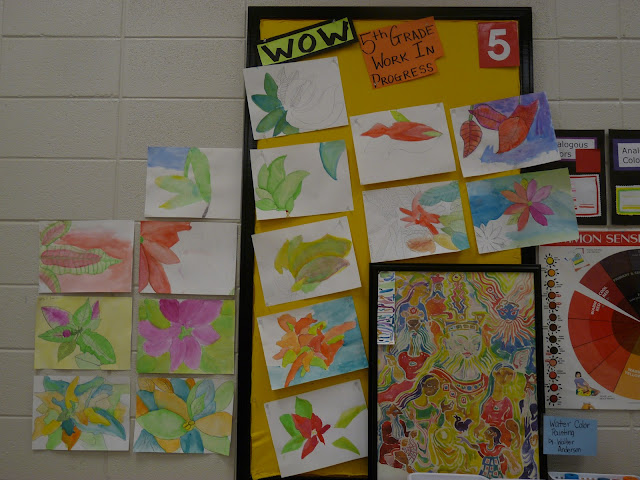Debora Bailey- Hampton Cove Elementary
April 29, 2012
WOW BOARD!
When 5th grade students began their water color paintings of previously recorded observational drawings of live poinsettias, I utilized a board full of outstanding work in progress for all 5 classes to view.
We had composed our paintings using space and content as Georgia O'Keeffe had in her flower paintings
 |
| Day one Paintings |
Choosing a particular work, deciding what made it successful, questioning positive attributes of the works at the beginning of each class was a tool I used to get my students anticipating and planning what they might accomplish during their painting time.


















